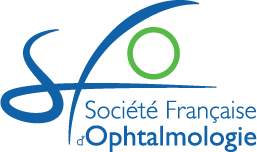Anti-glaucomatous eye drops are the first-line treatment of glaucoma. They could lead to a serious ocular surface impairment, either by their active ingredient or their preservative. Clinical dry eye signs and OSDI score are complementary to assess several aspects of ocular surface disease However, weak correlation between clinical signs and subjective symptom severity make difficult the classification of this condition. The aims of the current study was to identify factors that may influence the OSDI score and the association between the later and the severity of ocular surface damages in patients under preserved anti glaucomatous eye drops.
Name
La corrélation entre le score OSDI et les altérations de la surface oculaire chez les glaucomateux sous collyres anti glaucomateux conservés
Introduction
Patients et Methodes
Cross-sectional study of 155 glaucomatous patients, followed at the ophthalmology department of the internal security forces hospital, between July 2017 and June 2018. All our patients answered the ‘Ocular Surface Disease Index’ (OSDI) questionnaire and had a complete ophthalmological examination with a precise evaluation of the ocular surface state. We analyzed factors that may influence the OSDI score and the correlation between the functional signs and the biomicroscopic signs using IBM SPSS version 22.0 software.
Résultats
The average age of our patients was 62.74 years ±10.69 and the sex ratio of 1.5 (M / F). The average duration of glaucoma was 5.9 years. Fifty-two percent of patients were under a multiple therapy. Prostaglandins were prescribed in 80.6% of patients and beta-blockers in 58.6% of patients. Benzalkonium chloride (BAK) was used in 80% of cases. The OSDI score was pathological in 61.3% of cases and classified as severe in 22.6% of cases. The biomicroscopic involvement of the ocular surface was at least minimal in 87.1% of cases. According to our results, the severity of the OSDI score was statistically associated with advanced age of patients (p<0.001), duration of glaucoma (p<0.001), combination therapy (p=0.011), and use of BAK-preserved eye drops (p=0.004). A discrepancy between the severity of the functional signs and that of the biomicroscopic signs of alteration of the ocular surface was noted (Kendall's tau <0.4)
Discussion
OSDI score is the most widely used tool to measure the symptoms of ocular surface disease in glaucoma patients. This questionnaire was adapted to several populations and translated into different languages. However, certain biases attributed to a visual field defect, must be considered particularly the scores for questions relating to vision. A discrepancy between the severity of the functional signs and that of the biomicroscopic signs of alteration of the ocular surface may have several causes
Conclusion
OSDI scores and biomicroscopic signs are complementary to assess several aspects of ocular surface disease.
